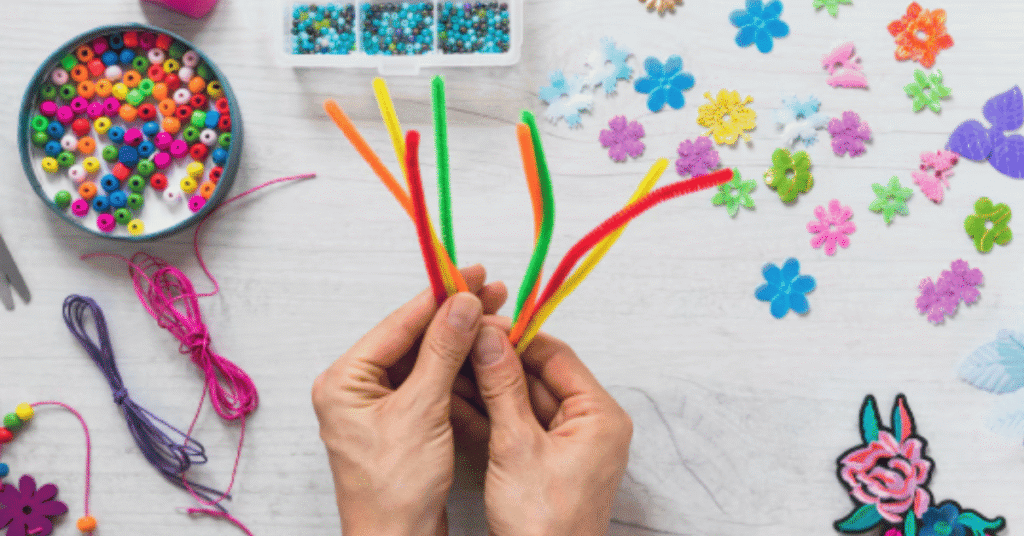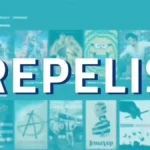In a world where digital distractions dominate leisure, few traditional crafts have managed to survive and evolve like Scoubidous. Known for their vivid colors, tactile textures, and endless patterns, Scoubidous represent more than just plastic strings twisted together—they embody patience, creativity, and the universal human desire to create something beautiful by hand. For those unfamiliar, Scoubidous (sometimes spelled Scoobies or Scoubidou) are woven cords traditionally made from brightly colored plastic strands, designed into intricate braids, keychains, bracelets, and charms. The appeal lies in their accessibility: a few cords, a few knots, and limitless imagination. This article dives deep into the history, cultural symbolism, crafting process, and artistic relevance of Scoubidous in today’s age of creative self-expression.
The term Scoubidou may sound whimsical, yet it carries a history that stretches back to postwar Europe. Emerging as a youth trend in France during the 1950s, this playful craft was inspired by a popular French song titled “Scoubidou” by Sacha Distel. The word itself came to represent both the dance craze and the colorful cords that children began weaving during that era. Over time, the trend spread across Europe and later found its way to classrooms and summer camps worldwide. Today, it’s not merely a nostalgic pastime; it’s a tactile art form celebrated by both children and adults. “Creativity is intelligence having fun,” Albert Einstein once said—and Scoubidous are a living, looping testament to that philosophy.
Origins and Cultural Evolution of Scoubidous
The earliest Scoubidous were simple braids, woven with two or four plastic strings to form cylindrical or square patterns. But as crafting communities expanded, so did the complexity of designs. From spiral knots to diamond twists, Scoubidous evolved into an art form of dexterity and symmetry. During the 1970s and 1980s, they became a symbol of youth culture, often traded as friendship tokens or worn as charms representing unity and individuality.
What makes Scoubidous particularly interesting is their cultural adaptability. In Japan, they inspired similar string crafts known as “lanyards,” while in the United States, they were integrated into summer camp activities and art curricula. The evolution of Scoubidous reveals not only artistic growth but also the cross-cultural exchange of handmade creativity. “Every culture teaches its children to tie something,” an old proverb goes, and in this craft, that lesson lives on vividly.
Materials and Tools: The Foundation of Scoubidou Crafting
Creating Scoubidous requires minimal materials but careful selection to ensure quality and longevity. The essential component is the boondoggle cord, typically made from PVC or flexible plastic. The strands come in various thicknesses, allowing for distinct textures and visual effects. Common tools include scissors, small clips to secure work-in-progress, and sometimes metallic rings for keychain attachments. To achieve professional results, the choice of color plays a crucial role. Some crafters prefer pastel tones for subtlety, while others combine neon or glitter-infused strands for visual impact. The tactile nature of the material makes it suitable for beginners and therapeutic for individuals seeking stress relief through repetitive motion. It’s an art of both patience and design—one where every twist and pull matters.
Table 1: Essential Scoubidou Materials and Their Uses
| Material/Tool | Description | Primary Use |
|---|---|---|
| Plastic cords | Flexible PVC strands in various colors | Main crafting material |
| Scissors | Sharp, precise cutting tool | To trim excess strands |
| Metal rings | Small loops or keychain bases | For attaching creations |
| Clips or pins | Used to secure knots | To maintain stability during weaving |
| Beads & charms | Decorative accessories | Enhance visual design and personalization |
Techniques and Patterns: The Heart of the Craft
The beauty of Scoubidous lies in the techniques used to create them. The most common designs include the square knot, spiral twist, cobra stitch, and diamond braid. Each technique yields a distinct texture and shape, offering endless possibilities for personal expression. Beginners often start with the square pattern—a four-cord weave forming a neat, geometric look. More advanced crafters explore eight-strand or even twelve-strand techniques, creating intricate sculptures or wearable art. The process requires focus and rhythm. Once the cords are secured, each movement builds upon the previous one. This repetitive motion forms not only patterns but a meditative flow—turning a hobby into a mindful practice. It’s often said that crafting Scoubidous feels like writing poetry with color and movement.
The Modern Renaissance of Scoubidous
In recent years, the resurgence of DIY culture and the global interest in mindfulness crafts have brought Scoubidous back into the spotlight. Social media platforms like Instagram and TikTok have revived this once-nostalgic activity, transforming it into a digital-age craft trend. Tutorials showcasing intricate weaves have reached millions, inspiring new generations to rediscover its charm. The craft also aligns perfectly with the sustainability movement. Unlike disposable toys, Scoubidous can be reused, redesigned, or gifted, promoting a slow-creation mindset. In classrooms, educators use them to teach geometry and pattern recognition, blending play with learning. Art therapists recommend Scoubidou weaving as a tool for improving motor coordination and concentration.
Table 2: Popular Scoubidou Techniques and Their Difficulty Levels
| Technique | Description | Skill Level | Visual Effect |
|---|---|---|---|
| Square Knot | Basic four-strand weave | Beginner | Structured and symmetrical |
| Spiral Twist | Continuous circular braid | Intermediate | Rope-like spiral pattern |
| Diamond Braid | Alternating loop pattern | Advanced | Diamond texture appearance |
| Cobra Stitch | Flat, alternating knots | Intermediate | Belt-like structure |
| Box Braid | Multi-layered interlocking cords | Expert | 3D sculptural finish |
The Symbolism Behind the Knots
Beyond their aesthetic appeal, Scoubidous carry symbolic meanings. Each knot represents connection—between people, moments, and emotions. Friendship bracelets made from Scoubidous often symbolize loyalty and creativity. The intertwined cords remind wearers of the bond they share with those who gifted or crafted them. Historically, knotwork has held deep significance in cultures across the globe, symbolizing eternity, unity, and continuity. Scoubidous extend this tradition into modern craftwork, where color combinations can express mood and individuality. For instance, a mix of blue and white may represent calmness, while red and yellow symbolize passion and joy. Thus, each creation becomes a personalized story woven through texture and tone.
Educational and Therapeutic Benefits
Beyond aesthetics, Scoubidous offer substantial cognitive and emotional benefits. In educational contexts, they develop hand-eye coordination, enhance spatial understanding, and encourage problem-solving. Teachers often introduce Scoubidou projects to foster teamwork, as group crafting helps students share materials, exchange ideas, and appreciate collective creativity. In therapy, Scoubidou crafting supports mindfulness practices similar to knitting or origami. The rhythmic looping of cords can reduce anxiety and promote focus, especially for individuals managing stress or attention-related challenges. The repetition acts as a calming ritual—each knot grounding the mind in the present moment. Occupational therapists have even incorporated Scoubidou weaving into motor-skill rehabilitation programs, demonstrating the intersection of art and healing.
Scoubidous in Fashion and Design
In fashion, Scoubidous have found a surprising resurgence. Designers now incorporate Scoubidou-inspired braids into accessories, handbags, and even haute couture garments. The flexibility of materials allows for unique structural embellishments that blend nostalgia with modern aesthetics. What began as a children’s pastime has evolved into an element of avant-garde fashion. Luxury brands experiment with recycled Scoubidou cords, embracing the sustainable and nostalgic appeal of the craft. Accessories such as keychains and bracelets serve as both style statements and expressions of individuality. “Fashion is art in motion,” said Coco Chanel—and Scoubidous, with their dynamic interplay of color and form, perfectly embody this sentiment.
Digital Communities and Global Revival
The revival of Scoubidous owes much to online creative communities. Enthusiasts share tutorials, sell handmade creations, and teach advanced techniques through workshops. Online marketplaces now feature artisan-level Scoubidou jewelry and sculptures, blurring the line between hobby and profession. Communities across Europe, Asia, and North America are hosting Scoubidou festivals that celebrate both tradition and innovation. These gatherings highlight how simple materials can connect generations and cultures. The craft’s low cost and high visual reward make it accessible to anyone, proving that creativity thrives not through technology but through imagination.
Sustainability and the Future of Handmade Crafts
In a fast-paced, disposable society, Scoubidous remind us of the enduring value of making things by hand. Many artisans are shifting toward biodegradable cords made from corn-based plastics or plant fibers, aligning with environmental goals. These innovations ensure that the craft remains relevant without compromising ecological responsibility. Future trends suggest a hybrid evolution—digital tutorials paired with eco-conscious materials, encouraging both global sharing and sustainable making. The revival of Scoubidous isn’t merely about nostalgia; it’s about reclaiming mindfulness and reconnecting with tactile joy.
Quotes that Reflect the Scoubidou Spirit
“Art is not what you see, but what you make others see.” — Edgar Degas
“In every handmade piece, there lies a story only hands can tell.” — Unknown
“The smallest knot may hold the biggest meaning.” — Anonymous
Conclusion
Scoubidous, with their loops and colors, are far more than simple cords; they are an enduring symbol of creativity, connection, and culture. What began as a playful pastime has evolved into a form of personal expression and artistic mindfulness that bridges generations. From classrooms to fashion studios, from therapy centers to digital platforms, the art of Scoubidous continues to tie people together—literally and figuratively. Its charm lies in its simplicity. Just as each knot connects one strand to another, this craft connects people to patience, artistry, and nostalgia. In a world increasingly dominated by screens, Scoubidous remind us that joy can still be created by our own hands. For the maker, every twist carries a rhythm of concentration and calm; for the observer, every pattern tells a story of care and imagination. As the resurgence of handmade artistry continues, Scoubidous stand as a bright, looping thread woven through modern creativity—proving that sometimes, the simplest crafts hold the most enduring beauty.
FAQs
1. What materials are best for making Scoubidous?
PVC plastic cords are most commonly used, though newer eco-friendly alternatives made from biodegradable plastic or natural fibers are gaining popularity.
2. Can beginners easily learn Scoubidous?
Yes, beginners can start with simple square or spiral knots. The learning curve is gentle, and tutorials make the process intuitive.
3. Are Scoubidous suitable for children?
Absolutely. Scoubidou crafting is safe, educational, and excellent for improving hand-eye coordination and creativity among children.
4. How can Scoubidous be used beyond bracelets or keychains?
Advanced crafters use Scoubidous to make sculptures, bag handles, or even decorative wall hangings. Their versatility is endless.
5. What makes Scoubidous relevant in today’s world?
They represent a return to mindful creation, sustainability, and tactile engagement—a refreshing contrast to digital passivity in modern life.







